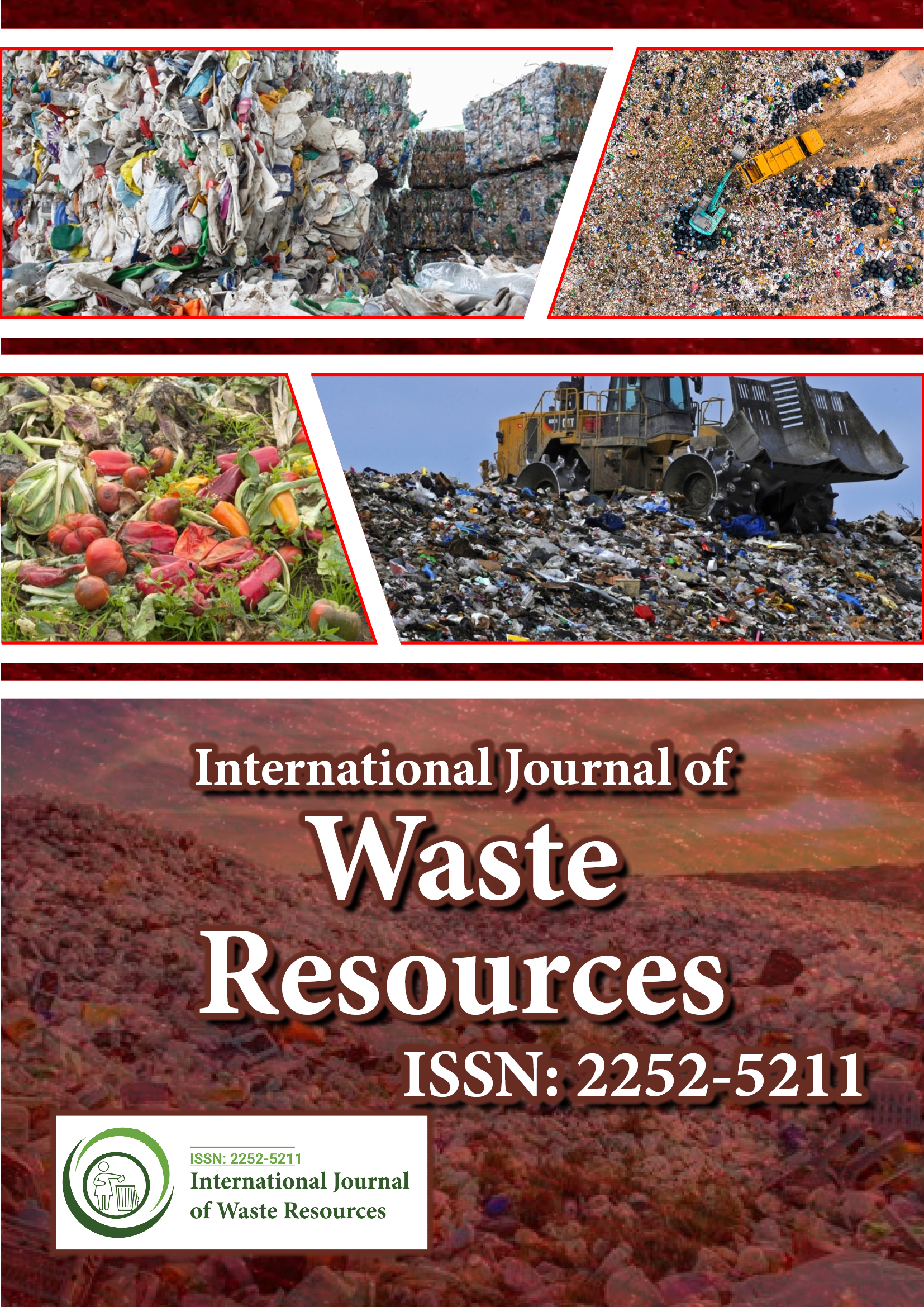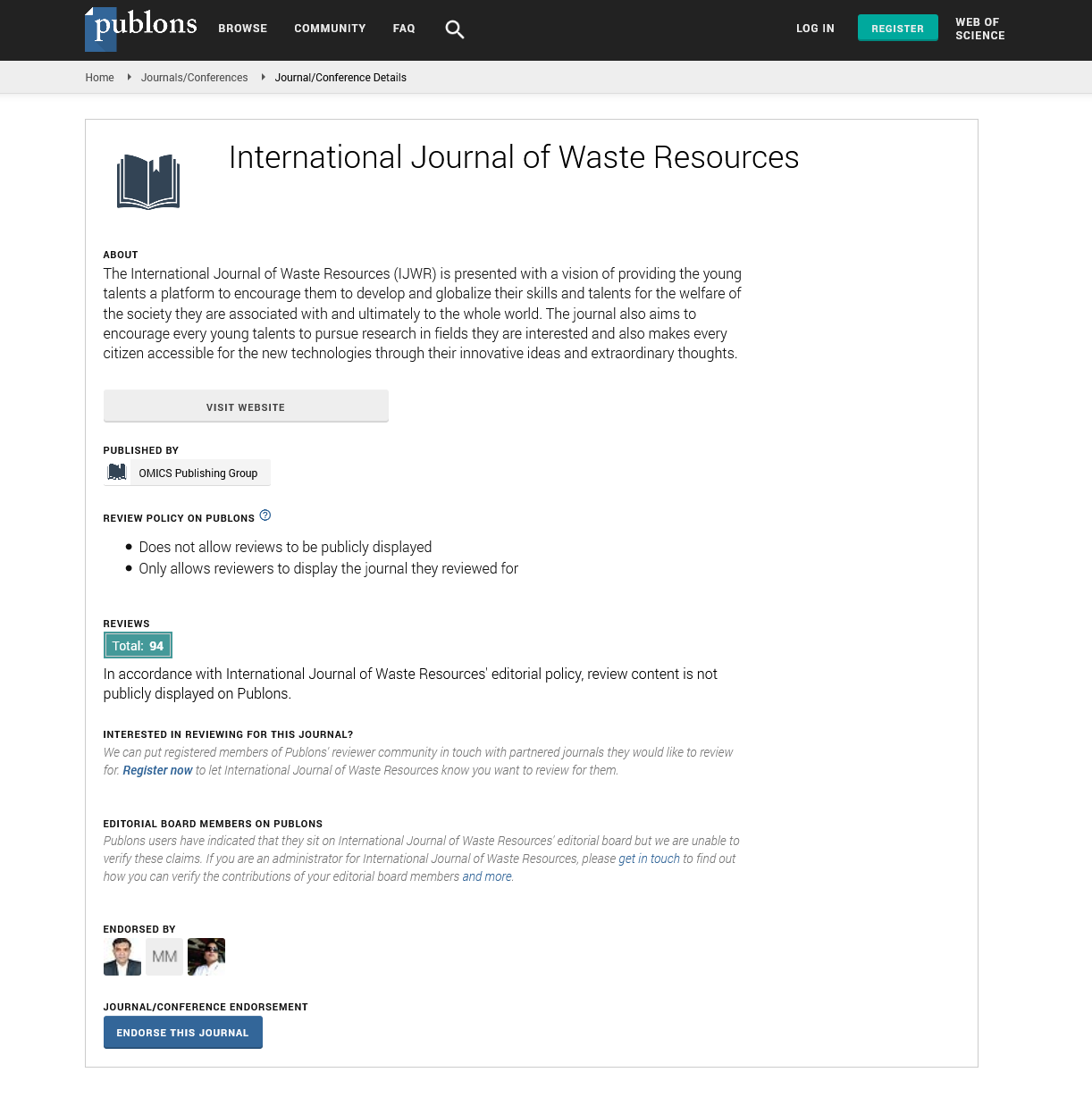Indexed In
- Open J Gate
- The Global Impact Factor (GIF)
- Open Archive Initiative
- VieSearch
- International Society of Universal Research in Sciences
- China National Knowledge Infrastructure (CNKI)
- CiteFactor
- Scimago
- Ulrich's Periodicals Directory
- Electronic Journals Library
- RefSeek
- Directory of Research Journal Indexing (DRJI)
- Hamdard University
- EBSCO A-Z
- Publons
- Google Scholar
Useful Links
Share This Page
Journal Flyer

Open Access Journals
- Agri and Aquaculture
- Biochemistry
- Bioinformatics & Systems Biology
- Business & Management
- Chemistry
- Clinical Sciences
- Engineering
- Food & Nutrition
- General Science
- Genetics & Molecular Biology
- Immunology & Microbiology
- Medical Sciences
- Neuroscience & Psychology
- Nursing & Health Care
- Pharmaceutical Sciences
Color removal from textile dyeing effluent by natural and activated clay adsorbents
4th World Congress and Expo on Recycling
July 27-29, 2017 | Rome, Italy
Handan Akulker, Elif H Gurkan and Semra Coruh
Ondokuzmayıs University, Turkey
Scientific Tracks Abstracts: Int J Waste Resour
Abstract:
Colored organic effluents are produced in different industries, i.e. textiles, paper, leather, plastics, rubber, cosmetics, etc. Discharging of dye effluents into water resources even in a small amount can affect the aquatic life. Dye ions are commonly removed from aqueous streams through coagulation-precipitation, ion exchange, ultrafiltration, nanofiltration, reverse osmosis, electro dialysis and solvent extraction. These methods are expensive. Adsorption is the most popular method for wastewater treatment due to its easy and inexpensive operation. In this study removal of malachite green dye ions from aqueous solutions using natural and activated clay adsorbents was studied. The effects of contact time, initial dye concentration and adsorbent dosage on malachite green dye removal efficiency were examined in a batch system. The equilibrium adsorption data were analyzed by Langmuir, Freundlich and Temkin adsorption isotherm models. The pseudo-second order, Elovich and intraparticle diffusion kinetic models were applied to the experimental data in order to describe the removal mechanism of dye ions using natural and activated montmorillonite clay. The results show that natural and activated montmorillonite is an alternative low-cost adsorbent for removing malachite dye ions.
Biography :
Handan Akülker graduated from Chemical Engineering and Genetics and Bioengineering double major program at Yeditepe University with full-scholarship in 2012. She worked at State Hydraulic Works as an Analyst for 3 years. Then, she started to work as a Research Assistant at Ondokuz Mayıs University in 2016. She is still a Master’s student at Chemical Engineering Department.
Email: handan.akulker@omu.edu.tr

